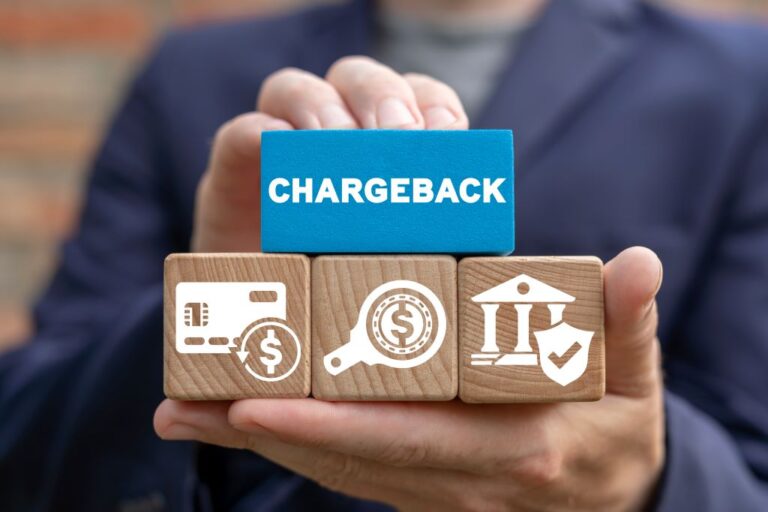Chargebacks serve as consumer protection, allowing cardholders to dispute fraudulent or incorrect transactions and receive refunds from their bank. While chargebacks safeguard consumers, they can pose challenges for merchants.
At a glance
- Discusses red flags, like unusual transaction patterns or suspicious email addresses.
- Highlights why educating customers about policies and using fraud management tools for early detection is necessary.
- Explains how to proactively combat chargeback fraud to ensure safe and secure online shopping experiences for consumers and safeguard businesses from financial losses and reputational damage.
Chargebacks serve as consumer protection, allowing cardholders to dispute fraudulent or incorrect transactions and receive refunds from their bank. While chargebacks safeguard consumers, they can pose challenges for merchants.
What is chargeback fraud?
Chargeback fraud is deceivingly simple. A purchase takes place and the customer disputes the charge with their bank after receiving the goods or service. This customer then claims the product was unauthorized or not received.
Chargeback fraud aims to retain the product or service while receiving a refund. With this type of fraud, the merchant is responsible for both the product they provided and the refund demanded by the customer and their bank. According to the Merchant Risk Council, on average, a merchant loses about 1.5 to 2.5 times the disputed dollar amount after considering the fees and operational costs.

How does chargeback fraud work?
While chargebacks work as consumer protection against genuine fraud or merchant errors, chargeback fraud exploits this system.
Although chargeback fraud is relatively straightforward. It usually works using the following steps:
- Initial purchase
- Receipt of goods or services
- Dispute initiation
- Bank investigation
- Fund reversal
- Merchant’s dilemma
- Consumer’s gain
There are three central claims the consumer may use to dispute the transaction:
- They never authorized the transaction.
- They never received the goods or services.
- The product was different from the description.
Once the dispute is submitted, the bank or card issuer investigates as part of ecommerce chargeback management. If the investigation returns in favor of the consumer, the funds are reversed directly from the merchant’s account and returned to the customer’s account. Many institutions also subject the merchant to a chargeback fee and automatic refund.
If the merchant legitimately shipped the correct product or provided the purchased service, they lose both the product and the refund amount, along with a fee. Merchants can contest the chargeback and some do. This dispute requires merchants to prove that the transaction was legitimate and fulfilled. However, since this process is time-consuming and doesn’t always result in favor of the merchant, many choose to take on the cost of the fraud.
Chargeback fraud’s impact on businesses
The primary victims of chargeback fraud are the merchants targeted or unintentionally abused. Financial loss is the most significant cost to merchants experiencing chargeback fraud. Businesses lose revenue from the sale, lose inventory and must pay the chargeback fee imposed by the card processor and bank.
However, there are other challenges and costs associated with chargeback fraud that are more than immediate financial loss. Most businesses must increase operational costs to mitigate and contest chargebacks, when possible. Along with increased operating costs is the threat of higher payment processes. Companies with high chargeback rates are often considered high-risk by payment processors. This high-risk status leads to increased transaction fees or a requirement to maintain a reserve fund for chargebacks. Even more threateningly, if the high rate of chargebacks continues, payment processors or card networks may remove the merchant’s account. Without a legitimate payment processor, a business cannot accept credit card transactions, which is catastrophic in the current cashless era.
All of these impacts ultimately lead to reputational damage for a business. With regular chargebacks, a merchant struggles to maintain a good reputation in the banking industry, and customers will see this as a sign of poor or unreliable service. With the proliferation of online reviews and social media, the reputation of a business spreads rapidly.
How can businesses recognize the red flags of chargeback fraud?
By recognizing red flags early, businesses mitigate the damage of chargeback fraud. Unfortunately, there is not one obvious indicator of fraud. However, spotting a combination of factors provides enough information to indicate suspicious activity. When monitoring fraud, look to this list as a guide to possible suspicious transactions:
- Rapid multiple orders – If someone places multiple orders from the same IP address or the same credit card but with different addresses, this is a possible indicator of fraud.
- High-value orders – Larger-than-normal orders are sometimes valid but are significant indicators to check the transaction, especially if they are bugging multiple quantities of the same item or request rush shipping.
- Suspicious email addresses – Odd or nonsensical email addresses can be signs of fraud, mainly if established with free email providers.
- Unusual location or IP address- Certain locations are known for high fraud rates or suspicious VPNs. Many fraud prevention systems geolocate IP addresses and can flag these transactions.
- Multiple cards used- If a successful one follows multiple failed transaction attempts or uses multiple cards from the same IP address quickly, it could be a sign that fraudsters are testing cards.
- Inconsistencies in order details- Odd variations in how the order is filled out are often a sign of fraud. For instance, if the name is all in caps but everything else is in lowercase, this is a possible sign of fraud.
- Direct inquiries about security- A customer asking about a merchant’s fraud prevention systems or return policies is a possible premeditation to fraud.
- Using older cards- Modern cards have more security features than older ones. Using an older card without a chip or pin is a warning sign.
- Suspicious order patterns- orders submitted apart from the regular customer pattern are signs of possible fraud.
Chargeback fraud prevention
The prevalence and simplicity of chargeback fraud are frightening for merchants and businesses. Thankfully, there are several prevention measures to assist companies in combating this type of fraud.
Mastercard has also announced the First-Party Trust program. With AI-powered insights, the First-Party Trust program aims to combat the trend in first-party or ‘friendly’ fraud. This type of fraud occurs when a valid, or genuine transaction is intentionally or mistakenly challenged by a cardholder. The program has been developed in collaboration with industry groups including the US Merchant Advisory Group and Merchant Risk Council.

What to do once chargeback fraud occurs
The first step to addressing chargeback fraud is to address the issue promptly and thoroughly. Quickly and effectively dealing with chargeback scams assists in preventing future occurrences. Below is a quick and straightforward guide on what to do when you experience chargeback fraud:
- Gather documentation – When disputing chargeback fraud, it’s necessary to compile evidence, including order receipts or invoices, shipping and delivery confirmations, correspondence or communications with the customer, proof of product or service delivery and other relevant transaction data.
- Respond promptly – Merchants usually need to dispute chargebacks within a small window. Dealing with the issue promptly ensures that the window does not expire.
- Analyze the root cause – Look through business processes used when the fraud was committed and determine if similar situations are preventable in the future.
- Adjust your policies and processes – With an understanding of the root cause, go through processes and make changes to prevent future chargeback issues.
- Educate customers – Often, chargebacks occur because of a customer misunderstanding rather than ill intent. Educating customers on policies helps prevent chargebacks due to misunderstandings.
- Invest in fraud management tools – Fraud management tools assist in identifying and preventing fraudulent transactions. Many of these tools offer address verification services, behavioral insights, card verification methods, and advanced fraud detection solutions.
- Continuously monitor – Proactively monitoring with regular reviews of transactions while looking for patterns or anomalies helps detect potential fraud before it escalates.
Chargeback fraud poses significant challenges for merchants and businesses, often resulting in substantial financial loss and operational challenges. While ecommerce chargeback protection is essential for protecting consumers from unauthorized transactions and subpar products or services, dishonest customers and criminals manipulate the system for their gain. With the prevalence of our mostly cashless economy, it’s paramount for merchants to understand and create systems of defense against chargeback fraud.
Proactive steps to understand, prevent and respond to chargeback fraud help merchants promote safe and secure online shopping practices for consumers while protecting their businesses from financial harm.



